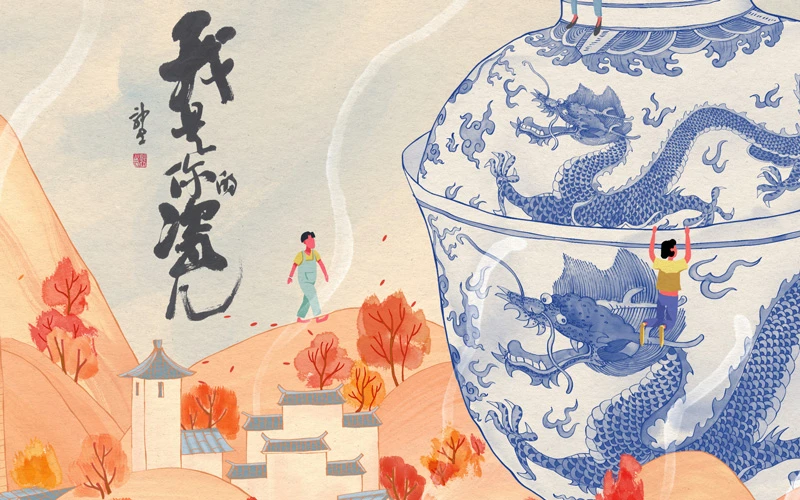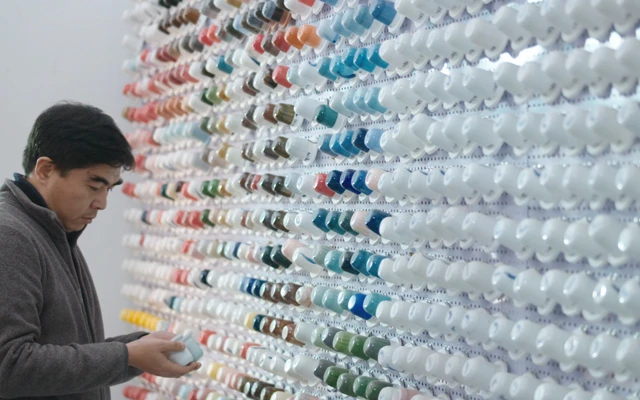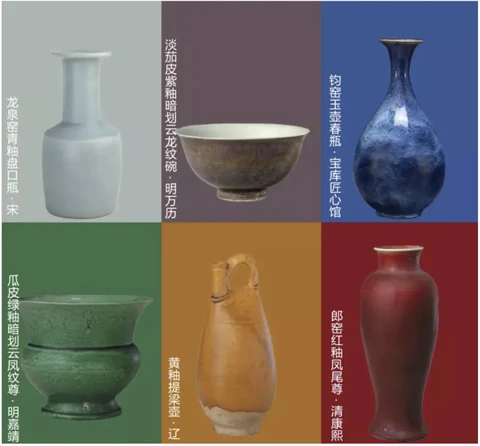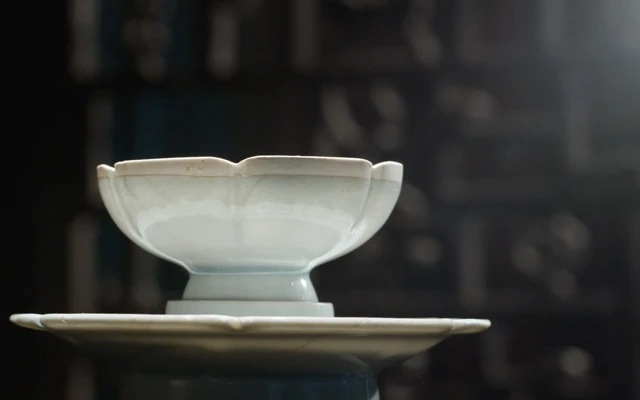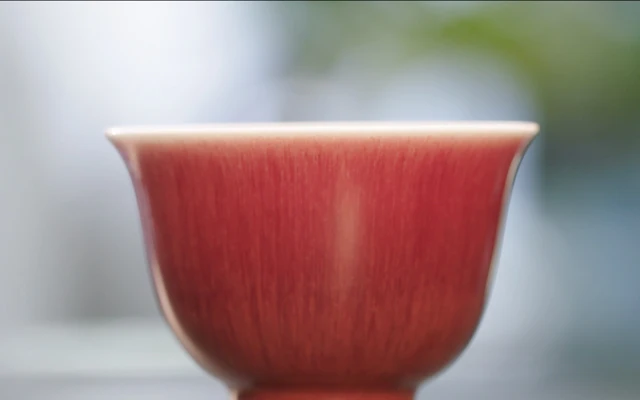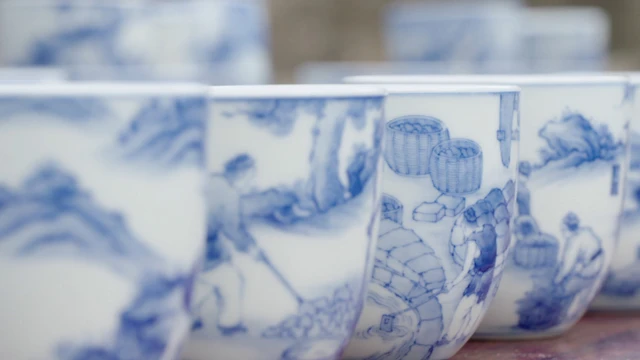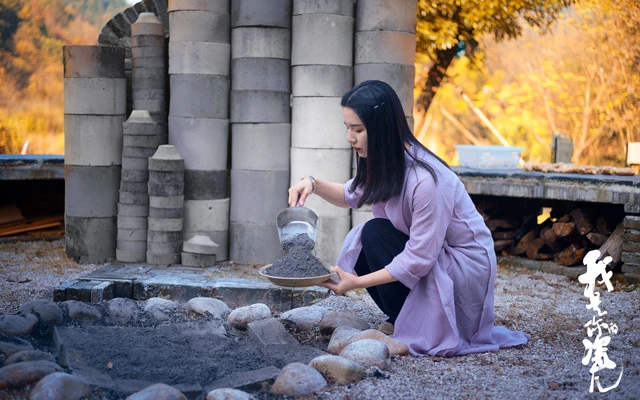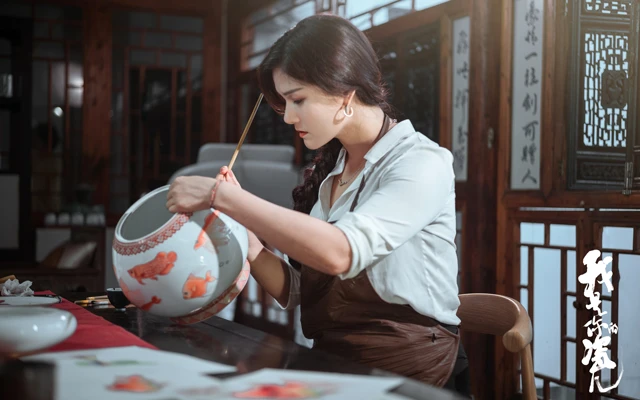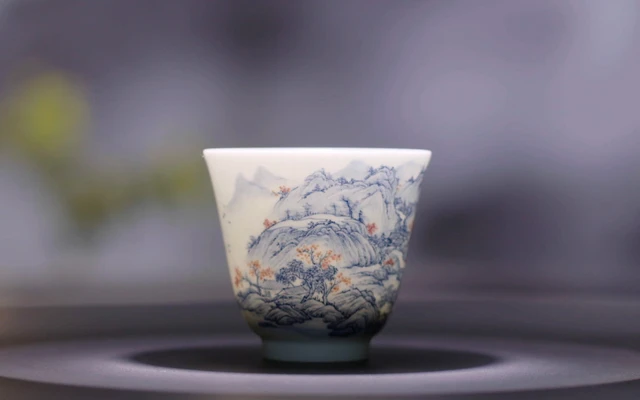The documentary genre in China, particularly in the realm of traditional culture, continues to produce outstanding works. Today, I would like to introduce a documentary film about porcelain titled "I Am Your Porcelain (我是你的瓷儿, Wo Shi Ni De Ci Er)". It is well known that in English, the term "china" refers to both "porcelain" and "China", highlighting China as the true homeland of porcelain.
Centuries before Europe mastered the technique of porcelain production, China was already creating exquisitely crafted porcelain. Chinese porcelain was once a high-end luxury item exported overseas. The documentary "I Am Your Porcelain" not only fills in our knowledge gap about porcelain but also elevates our aesthetic appreciation, allowing modern individuals to experience traditional aesthetics and craftsmanship through the magnificent Chinese porcelain.
"I Am Your Porcelain" features narrator Yu Entai, unfolding a thousand-year-old porcelain scroll. Unlike traditional documentaries that tend to be serious and dull, this film adopts a humorous and witty overall style. In Beijing dialect, "Ci Er" means "good friend, buddy", likening porcelain to an friend we interact with daily, a material object embodying Chinese traditional aesthetics and craftsmanship. Seemingly ordinary yet deeply mysterious, emerging from clay and fire yet as lustrous as jade, it is time to reacquaint ourselves with porcelain.
The five episodes of "I Am Your Porcelain" are titled "Pure Colors Shining", "Eternal Blue and White", "Harmonious Colors Blend", "Competing in Brilliance", and "The World on Porcelain". Taking you on a tour of the millennium-old porcelain capital Jingdezhen, immersing you in the dazzling world of porcelain, this series may challenge your preconceptions about porcelain. Binge-watching it will surely satisfy your visual cravings.
When discussing Chinese porcelain, one cannot overlook Jingdezhen. If China represents world porcelain, then Jingdezhen porcelain epitomizes Chinese porcelain. Jingdezhen began producing ceramics as early as the Han Dynasty. Emperors throughout history designated Jingdezhen as the imperial porcelain production site. Emperor Zhenzong of the Song Dynasty even named this dreamlike city "Jingde".
Director Guan Zijian, rooted in Jingdezhen for eight years, dedicated himself to capturing porcelain on film. In 2017, he produced another highly acclaimed documentary "Handmade China", laying the foundation for this documentary. Jingdezhen, classified as a fourth-tier city, should have experienced population outflow, yet it attracts a steady stream of newcomers. Many foreigners even relocate to Jingdezhen to pursue ceramics.
Artisans and porcelain lend this small city a unique significance. "I Am Your Porcelain" guides the audience through the streets of Jingdezhen, visiting skilled artisans, inheritors of ceramic dynasties, entrepreneurs exploring new techniques, and inspirational stories of apprentices turned bosses.
Through a series of short stories, different schools of porcelain history are introduced, from simple monochrome glazes to blue and white, famille rose, and doucai. Flowing through porcelain is a history of colors breaking free from constraints. The development of Chinese porcelain has undergone a progression from simplicity to complexity—from monochrome to polychrome, from unglazed to glazed, from underglaze to overglaze, culminating in the intricate art of polychrome and doucai underglaze painting.
The opening of "I Am Your Porcelain" introduces the early aesthetic of porcelain: monochrome glazes. One cannot help but admire the aesthetic taste of ancient peoples, with a plethora of colors ranging from simple elegance to bold vibrancy, expanding one's horizons. Monochrome glaze refers to porcelain with no surface patterns. The glaze colors of ancient times were naturally derived from minerals, resulting in colors that are natural and elegant, vibrant yet not gaudy.
The earliest Chinese porcelain: celadon, is a type of monochrome glaze. The simple and elegant grayish-green and bluish-gray colors exude a sense of sophistication, comparable to the popular Morandi colors nowadays. Each color of monochrome glaze represents an emperor's preference. Emperor Xuande favored green, hence the green glaze. Emperor Kangxi favored red, leading to langhong and purple. Jingdezhen mirrors the color preferences of the emperors.
"Raw embryos outline the blue and white porcelain pen from thick to light," Jay Chou's song made blue and white porcelain popular throughout the country. Blue and white porcelain, often simply referred to as blue and white, is one of the four traditional famous porcelains in Jingdezhen.
It appeared in the Tang Dynasty, matured in the Yuan Dynasty, and became one of the mainstream porcelain products in the Ming and Qing Dynasties. Blue and white porcelain is made using cobalt ore containing cobalt oxide as raw material to depict patterns on the ceramic body. It is then covered with a layer of transparent glaze and fired at high temperatures. After the cobalt material is fired, it presents a unique blue pattern, which is the familiar blue and white porcelain to us.
The documentary interviewed several blue and white porcelain craftsmen with different styles. There are those who follow the traditional route and those who innovate with modern techniques. For example, Yu Shan, who studied the Kangxi blue and white painting method, faithfully restores the seventy-two processes of porcelain firing in Jingdezhen; he is a traditional blue and white porcelain craftsman.
There is also the artist Gan Daofu, who collects antique blue and white porcelain shards and seeks creative inspiration from the creations of ancient artists. He incorporates ink wash painting into blue and white porcelain creation, bringing a fresh perspective. Furthermore, there is the ceramic university professor Luo Xiaocong, who creatively combines printmaking with blue and white porcelain, creating blue and white porcelain prints that elevate this ancient craft into the realm of modern art.
In addition to the dignified and simple blue and white porcelain, there is another type of colorful porcelain that is most popular. Bold reds, enticing pinks, vibrant greens, and shimmering golds. Placed there, it is a sight to behold, held in hand, it becomes a piece of lotus pond. It is not just the art of porcelain but also the knowledge of painting; it is called You Shang Cai (overglaze porcelain).
You Shang Cai is the technique of painting on the glazed surface of already fired porcelain using various colored pigments, then firing it a second time to solidify the pigments at low temperatures. What is most valued is the painting technique, a ceramic art that truly tests one's painting skills.
The documentary also visited the master of colored porcelain, Li Leiying. She excels in painting traditional Chinese style child play scenes on porcelain, her skillful brushwork is even smoother than painting on paper. These lovely images are endowed with a warm and transparent feeling by porcelain, a texture that traditional painting on paper lacks; this is the charm of colored porcelain.
Ma Weidu once showcased several exquisite ceramic teacups in a live broadcast: "These small cups are all painted with famille rose, reaching a level comparable to the official kilns of the Yongzheng period." These small famille rose cups all come from the same kiln - the Xu kiln in Jingdezhen, Jiangxi. Xu Zhi Jun, the founder of the Xu kiln, has been studying the famille rose craft for 24 years. He sought a craft that could be diligently pursued for decades, a craft that would not easily change. This is the artisan spirit of Jingdezhen.
In the generational transmission of craftsmanship in Jingdezhen, being a ceramic inheritor is no easy task. Li Jueming's colored porcelain creations are often criticized by his elderly father. However, he still regularly places his colored porcelain works in a box and respectfully presents them to his father for guidance. Despite being criticized by his father, Li Jueming's craftsmanship is actually quite good. He applied a lotus pond pattern from the Yongzheng period to a covered bowl, resulting in a stunning piece. The delicate brushstrokes and elegant composition make one forget the mundane, truly showing that a strict teacher produces outstanding students.
From Chenghua to Yongzheng, more than just the names of emperors have passed. The porcelain carries with it a history of colors breaking free from shackles, as well as a history of liberation of artistic concepts. Inheritance and innovation, like two gears, drive the progress of human civilization.
In "I Am Your Porcelain", we witness the awe-inspiring scenes depicted on those porcelain pieces. There are blooming lotus flowers, men and women feasting, from a pair of wings to a stretch of sky, mountains covered in wildflowers, blue peaks, bustling markets. It is safe to say that porcelain is a fantasy world created by craftsmanship. There is a particularly exquisite line in the film: created by one pair of eyes, possessed by another.
Porcelain encapsulates the ancient and modern of China, enduring through millennia, ever fresh. "I Am Your Porcelain" is such a captivating and moving documentary, not only enlightening us on porcelain knowledge but also bringing us closer to porcelain. What is most touching is that China, as the birthplace of porcelain, has inherited the talents and patience of past craftsmen. The artisans quietly crafting porcelain in the film exhibit a rare serenity in the modern world. Their attitude towards porcelain is akin to that of caring for their own children, rather than just a means of livelihood. After watching this documentary, one can't help but yearn to visit Jingdezhen and experience the long-lost spirit of Chinese craftsmanship.
